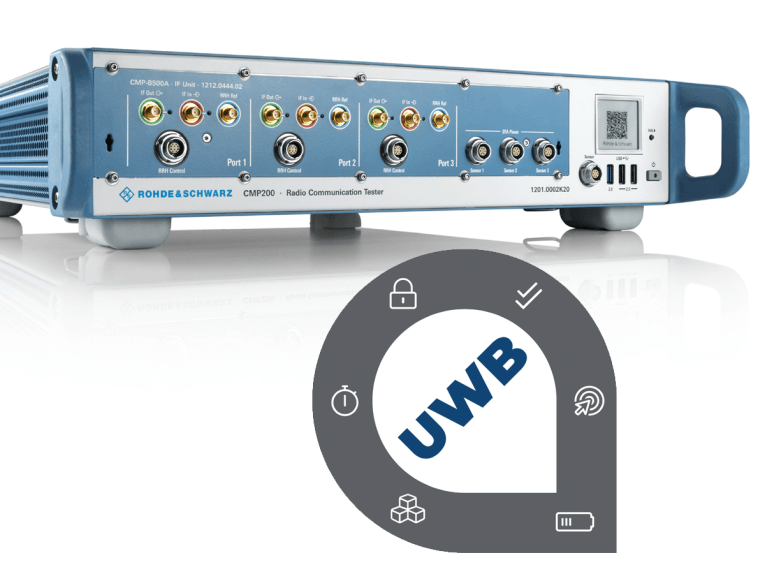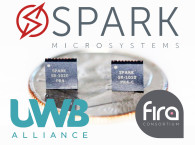
The test and measurement equipment expert Rohde & Schwarz and the pioneer in UWB technology Decawave have jointly developed test and measurement capabilities for production line testing of UWB functions in chipsets and complete devices. As part of the cooperation, Decawave provided knowledge of the required test strategy and test methods, as well as the Decawave DW3000 as test device. Rohde & Schwarz has added UWB test capabilities to their R&S CMP200 radio communication tester, making it the only test platform on the market able to provide R&D and production RF tests for both 5G FR2 and UWB functions.
UWB technology, based on the IEEE 802.15.4a and 802.15.4z standards, enables centimeter-accurate location measurements at distances up to 75 meters. UWB also includes secure data communication at rates up to 27 Mbps, with very low power requirements. UWB is an ideal candidate for implementing low latency, highly accurate, reliable, and secure local area location services. UWB opens new doors in the fields of mobile communication, automotive, IoT and industry 4.0 applications. But consumer electronics applications, where UWB can ideally complement existing standards like Bluetooth, Wi-Fi or even NFC are what is currently pushing the technology forward. The very wide bandwidth and very low power density make it possible for UWB signals to share spectrum with other narrowband and wideband systems without causing interference.
Since Apple has patented the use of UWB to recognize when a user is approaching a car, unlock its doors, the market was suddenly awaken for a technology that has been dormant for quite a while. Meanwhile Apple has built UWB into its new iPhone 11 and 11 Pro smartphones using its own dedicated chip, the U1. As Apple explains in its promotion for the iPhone, UWB will enable quick file exchanges with AirDrop (which uses Bluetooth to send files to nearby users), by pinpointing the exact location of phones. Apple intends to implement the technology in key fobs and tracking tags, helping users find pets, objects, or simply activating smart home devices.
Many companies, like Samsung, Sony, or Bosch are currently exploring UWB to quickly activate home devices (e.g. switch to a subscription profile or user on a TV or computer), and creating location-based service recommendations on smartphones. Using UWB for these applications can be combined with Bluetooth-based location, with the difference that UWB is a thousand times faster and only works in short distances.
The 802.15.4a/z standards include several frequency bands; Decawave as a founding member of the UWB Alliance and a chipmaker already supplies products using frequencies from 3.5 to 6.5 GHz. However, interest is now concentrating on the high band, with channels defined between 5.8 and 10.6 GHz, supporting higher power transmission, leading to longer range. The Decawave DW3000 chipset is intended to operate using UWB channels 5 and 9 in the high band, with a bandwidth of 500 MHz.
“As OEM and ODM customers get ready to deploy their UWB products, they expect test equipment to be ready and capable to meet their manufacturing needs,” says Anton Messmer, Vice President Mobile Radio Testers at Rohde & Schwarz.
“This joint cooperation enables our customers to efficiently manufacture high volume products with reduced time to market. We are happy to work together with Rohde & Schwarz by enabling their solutions to meet the testing requirements of the UWB eco systems,” adds Jeff Clancy, Vice President of Engineering at Decawave.
The R&S CMP200 radio communication tester is designed to meet RF test requirements for devices operating from 6 to 20 GHz in stand-alone mode, and for all essential 5G FR2 bands including 28 GHz and 39 GHz when used with the remote radio head, the R&S CMPHEAD30. This solution from Rohde & Schwarz is currently the only test instrument available with the necessary specification to support R&D and production test for UWB and 5G FR2 technologies in a single device.
www.decawave.com
www.rohde-schwarz.com/product/cmp200







